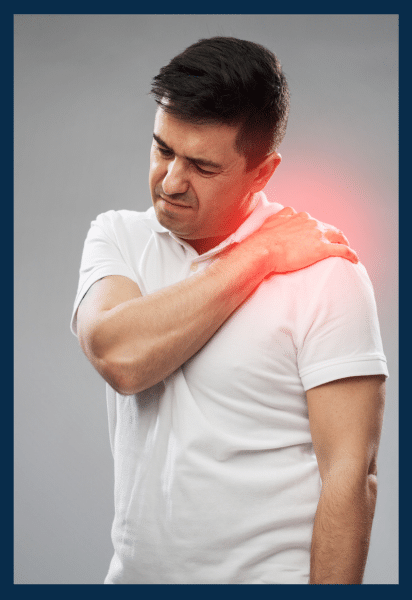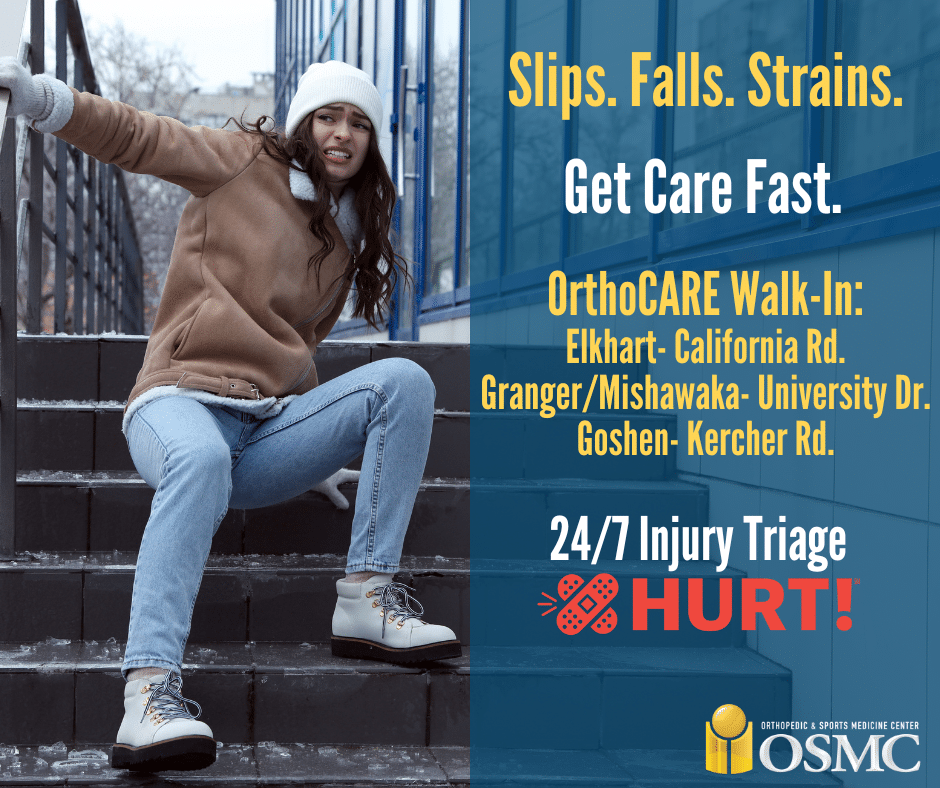
Shoulder pain is a common complaint that can disrupt daily life, making simple tasks like lifting, reaching, or even sleeping difficult. The shoulder is a complex joint with a wide range of motion, supported by muscles, tendons, and ligaments. This complexity and frequent use make it vulnerable to injury, overuse, and degeneration. At OSMC, we understand how frustrating shoulder pain can be and are dedicated to diagnosing and treating its root causes. Here are five common reasons for shoulder pain and what you can do about them.
1. Rotator Cuff Injuries
The rotator cuff is a group of muscles and tendons that stabilize the shoulder joint and allow arm movement. Rotator cuff injuries are among the most common causes of shoulder pain, particularly in people who perform repetitive overhead motions, such as athletes or manual laborers.
These injuries range from inflammation (tendinitis) to partial or complete tears. Symptoms include dull, aching pain, weakness, and difficulty lifting the arm. Treatment depends on the severity of the injury and may include rest, physical therapy, anti-inflammatory medications, and, in severe cases, surgery. Strengthening shoulder muscles and avoiding repetitive stress can help prevent rotator cuff injuries.
2. Shoulder Impingement
Shoulder impingement occurs when the tendons of the rotator cuff become pinched between the bones of the shoulder, often due to repetitive motions or poor posture. This condition leads to pain when lifting the arm, particularly above shoulder height.
The condition typically starts with mild discomfort but can worsen if left untreated. Early management includes rest, ice, physical therapy, and improving posture. In more advanced cases, corticosteroid injections or minimally invasive surgery may be required to create more space for the tendons. Maintaining good posture and practicing shoulder stretches can reduce the risk of impingement.
3. Frozen Shoulder (Adhesive Capsulitis)
Frozen shoulder, or adhesive capsulitis, is a condition that causes the shoulder joint to stiffen and lose its range of motion. It often develops after immobility, such as following an injury or surgery. People with diabetes or thyroid disorders are at a higher risk of developing this condition.
Frozen shoulder progresses in three stages: freezing (painful), frozen (stiffness), and thawing (gradual recovery). Treatment includes physical therapy to restore mobility, anti-inflammatory medications for pain relief, and, in some cases, corticosteroid injections. Early intervention is critical to preventing long-term stiffness.
4. Shoulder Arthritis
Shoulder arthritis occurs when the cartilage in the shoulder joint wears down, leading to pain, swelling, and stiffness. Osteoarthritis, caused by aging and wear and tear, is the most common type, but rheumatoid arthritis can also affect the shoulder.
Symptoms include deep, aching pain, difficulty with overhead movements, and joint stiffness. Treatment options include lifestyle modifications, physical therapy, anti-inflammatory medications, and joint injections. In severe cases, surgical options such as shoulder replacement may be necessary. Maintaining an active lifestyle and managing underlying conditions can slow the progression of arthritis.
5. Bursitis
Bursitis occurs when the bursae, tiny fluid-filled sacs that cushion the shoulder joint, become inflamed. This condition is often caused by repetitive overhead motions or prolonged pressure on the joint.
Symptoms include pain, swelling, and tenderness, especially during movement. Treatment focuses on reducing inflammation through rest, icing, anti-inflammatory medications, and physical therapy. Severe cases may require fluid aspiration or corticosteroid injections. To prevent bursitis, avoid prolonged repetitive motions and take regular breaks during activities.
If you have severe or sudden shoulder pain following an injury, or if there’s visible deformity or swelling, please visit our orthopedic walk-in clinics or make an appointment.
Seek care if pain lasts more than a few days, worsens, or limits your motion. Signs of infection (redness, warmth, swelling, fever) and nerve symptoms (numbness, tingling, weakness) also require attention. If you’re experiencing grinding, instability, or pain related to arthritis or past injuries, please seek medical attention to prevent damage to the shoulder joint.
Shoulder Pain Treatment With OSMC
At OSMC, we specialize in diagnosing and treating shoulder pain, offering tailored solutions to get you back to your daily activities pain-free. From advanced imaging and non-invasive therapies to minimally invasive surgeries and personalized rehabilitation programs, we provide comprehensive care for all shoulder conditions.
Schedule an appointment with one of our experts today.



